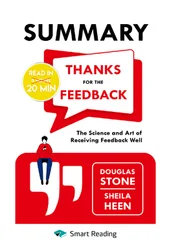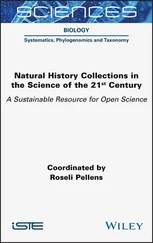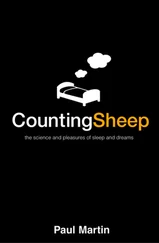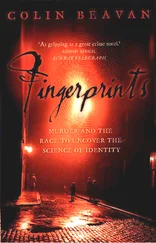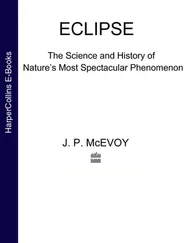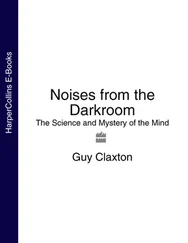The Science of Reading
Здесь есть возможность читать онлайн «The Science of Reading» — ознакомительный отрывок электронной книги совершенно бесплатно, а после прочтения отрывка купить полную версию. В некоторых случаях можно слушать аудио, скачать через торрент в формате fb2 и присутствует краткое содержание. Жанр: unrecognised, на английском языке. Описание произведения, (предисловие) а так же отзывы посетителей доступны на портале библиотеки ЛибКат.
- Название:The Science of Reading
- Автор:
- Жанр:
- Год:неизвестен
- ISBN:нет данных
- Рейтинг книги:5 / 5. Голосов: 1
-
Избранное:Добавить в избранное
- Отзывы:
-
Ваша оценка:
- 100
- 1
- 2
- 3
- 4
- 5
The Science of Reading: краткое содержание, описание и аннотация
Предлагаем к чтению аннотацию, описание, краткое содержание или предисловие (зависит от того, что написал сам автор книги «The Science of Reading»). Если вы не нашли необходимую информацию о книге — напишите в комментариях, мы постараемся отыскать её.
The Science of Reading
The Science of Reading
Wiley
Blackwell Handbooks of Developmental Psychology
The Science of Reading: A Handbook
The Science of Reading — читать онлайн ознакомительный отрывок
Ниже представлен текст книги, разбитый по страницам. Система сохранения места последней прочитанной страницы, позволяет с удобством читать онлайн бесплатно книгу «The Science of Reading», без необходимости каждый раз заново искать на чём Вы остановились. Поставьте закладку, и сможете в любой момент перейти на страницу, на которой закончили чтение.
Интервал:
Закладка:
Table of Contents
1 Cover
2 Series Page Wiley Blackwell Handbooks of Developmental Psychology This outstanding series of handbooks provides a cutting‐edge overview of classic research, current research, and future trends in developmental psychology. Each handbook draws together 25–50 newly commissioned chapters to provide a comprehensive overview of a sub‐discipline of developmental psychology. The international team of contributors to each handbook has been specially chosen for its expertise and knowledge of each field. Each handbook is introduced and contextualized by leading figures in the field, lending coherence and authority to each volume. The Wiley Blackwell Handbooks of Developmental Psychology will provide an invaluable overview for advanced students of developmental psychology and for researchers as an authoritative definition of their chosen field. Published Blackwell Handbook of Adolescence Edited by Gerald R. Adams and Michael D. Berzonsky Blackwell Handbook of Early Childhood Development Edited by Kathleen McCartney and Deborah A. Phillips Blackwell Handbook of Language Development Edited by Erika Hoff and Marilyn Shatz The Wiley Blackwell Handbook of Childhood Cognitive Development, 2nd edition Edited by Usha Goswami The Wiley Blackwell Handbook of Adulthood and Aging Edited by Susan Krauss Whitbourne and Martin Sliwinski The Wiley Blackwell Handbook of Infant Development, 2nd Edition Edited by Gavin Bremner and Theodore D. Wachs The Wiley Handbook of Developmental Psychology in Practice: Implementation and Impact Edited by Kevin Durkin and H. Rudolph Schaffer The Wiley Handbook of Group Processes in Children and Adolescents Edited by Adam Rutland, Drew Nesdale and Christia Spears Brown The Wiley Handbook of Early Childhood Development Programs, Practices, and Policies Edited by Elizabeth Votruba‐Drzal and Eric Dearing The Wiley Blackwell Handbook of Childhood Social Development, 3rd Edition Edited by Peter K. Smith and Craig H. Hart The Science of Reading: A Handbook, 2nd Edition Edited by Margaret J. Snowling, Charles Hulme, and Kate Nation
3 Title Page The Science of Reading : A Handbook Second Edition Edited by Margaret J. Snowling, Charles Hulme, and Kate Nation
4 Copyright Page
5 List of Contributors
6 Preface
7 Acknowledgments
8 PART I: Word Recognition CHAPTER ONE: Progress in Reading Science Reading and Reading Science in Historical Context Advance 1: The Word‐identification System in Skilled Alphabetic Reading Advance 2. Comprehending while Reading Advance 3. Toward a More Universal Science of Reading Concluding Reflections: Learning to Read and Reading Pedagogy References CHAPTER TWO: Models of Word Reading Reading Aloud: Accounting for Basic Phenomena Simulations of Behavioral Studies: What Did They Show? Nonword Pronunciation Summary Hybrid Models Learning to Read Conclusions Acknowledgments References CHAPTER THREE: Word Recognition I Letter‐Based Word Recognition Orthographic Processing and Word Recognition Bridging the Gap with Sentence Reading Conclusions Acknowledgments References CHAPTER FOUR: Word Recognition II Evidence that Phonology Is Involved in Silent Reading Computational Models of Visual Word Recognition Phonology, Reading, and Neuroscientific Findings Conclusions References CHAPTER FIVE: Word Recognition III Morphemes as “Islands of Regularity” Morphology and the Spelling‐Meaning Mapping Morphological Analysis in Skilled Reading Theoretical Accounts of Morphological Processing Mechanisms for Acquiring Morphological Knowledge Conclusions and Emerging Questions References
9 PART II: Learning to Read and Spell CHAPTER SIX: The Foundations of Literacy Precursors to Literacy Language Input The Home Literacy Environment The Limiting Environment Complex Linguistic Contexts Summary and Conclusions References CHAPTER SEVEN: Learning to Read Words What Needs to Be Learned for Skilled Word Reading? Sublexical‐Level Learning Lexical‐Level Learning Interactions between Sublexical and Lexical Learning Conclusions and Future Directions Acknowledgments References CHAPTER EIGHT: Learning to Spell Words Writing Systems Elements of Children’s Spelling Development Beyond Simple Phonological Patterns Children’s Spelling in the Digital Age Theories of Spelling Development Spelling and Developmental Disabilities Implications for Instruction Future Directions References CHAPTER NINE: Individual Differences in Learning to Read Words Methodological Approaches Child‐ and Word‐Level Predictors of Individual Differences Word‐Level Predictors Child‐by‐Word Predictors Conclusions Acknowledgments References CHAPTER TEN: Teaching Children to Read How Best to Teach Decoding in Whole‐Class Settings? Teaching Children with Reading Difficulties Conclusions References
10 PART III: Reading Comprehension CHAPTER ELEVEN: Reading Comprehension I A Brief History of Models of Discourse Comprehension A Comprehensive Model of Discourse Comprehension Current Research Issues Concluding Remarks References CHAPTER TWELVE: Reading Comprehension II Eye Movements and Reading Conclusions Acknowledgments References CHAPTER THIRTEEN: Modeling the Development of Reading Comprehension Theoretical Foundations for Reading Comprehension Development Understanding the Development of Reading Comprehension – Methodological Considerations Understanding the Development of Reading Comprehension – What Do We Know? Is the Simple View of Reading Too Simple? The Simple View of Reading – Simple but Complex Relationships between Longitudinal Studies and Theories of Reading Development Future Directions References CHAPTER FOURTEEN: Children’s Reading Comprehension Difficulties A Framework for the Study of Reading Comprehension Difficulties Identification and Prevalence of Poor Comprehenders The Identification of Poor Comprehenders: Variation in Selection and Group Matching The Measurement of Reading Comprehension: The Nature and Effect of Differences among (Standardized) Assessments Sources of Reading Comprehension Difficulty The Dynamics of Language and Literacy Development over Time Conclusions and Future Directions References
11 PART IV: Reading in Different Languages CHAPTER FIFTEEN: Reading and Reading Disorders in Alphabetic Orthographies Characteristics of Alphabetic Orthographies Models of Word Reading Skilled Word Reading in Alphabetic Orthographies Reading Development in Alphabetic Orthographies References CHAPTER SIXTEEN: Reading and Reading Disorders in Chinese Chinese Language(s) Chinese Script(s) All Chinese Is Not Alike Predictors of Individual Differences in Learning to Read Spelling Skills Instruction and Remediation for Word Recognition Reading Comprehension in Chinese Conclusions and Next Steps Correspondence Acknowledgments References CHAPTER SEVENTEEN: Reading the Akshara Writing System The Akshara Writing System Reading Development Intra‐symbol features Reading Development: Word Decoding Conclusions References
12 PART V: Disorders of Reading CHAPTER EIGHTEEN: Acquired Disorders of Reading and Writing Acquired Disorders of Reading and Writing Pure Alexia/Letter‐by‐Letter Reading Surface Dyslexia Phonological Dyslexia Deep Dyslexia Concluding Comments References CHAPTER NINETEEN: Developmental Dyslexia Developmental Dyslexia Definition of Developmental Dyslexia Common Features of Dyslexia Prevalence of Developmental Dyslexia Sex Differences in Developmental Dyslexia Common Co‐Occurring Conditions Operational Definitions of Dyslexia Multifactor Models Leveraging Developmental Research Methodologies to Advance Understanding about Dyslexia Screening for Early Identification The Role of Assistive Technology for Individuals with Dyslexia Improving Operational Definitions Acknowledgments References CHAPTER TWENTY: Comorbidity of Reading Disorders Comorbidity of Dyslexia and Co‐Occurring Disorders Prevalence of Dyslexia Comorbidities Models of Dyslexia Models of Comorbidity Comorbidities between Dyslexia and Other Neurodevelopmental Disorders Clinical and Educational Implications References CHAPTER TWENTY ONE: Learning to Read with a Language or Hearing Impairment The Language Basis of Reading Children with Language Impairment: Who Are They? Reading Development in Children with Language Impairment Children with Hearing Loss Summary and Conclusions References
Читать дальшеИнтервал:
Закладка:
Похожие книги на «The Science of Reading»
Представляем Вашему вниманию похожие книги на «The Science of Reading» списком для выбора. Мы отобрали схожую по названию и смыслу литературу в надежде предоставить читателям больше вариантов отыскать новые, интересные, ещё непрочитанные произведения.
Обсуждение, отзывы о книге «The Science of Reading» и просто собственные мнения читателей. Оставьте ваши комментарии, напишите, что Вы думаете о произведении, его смысле или главных героях. Укажите что конкретно понравилось, а что нет, и почему Вы так считаете.



